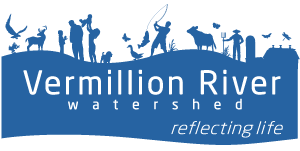Using Stormwater Modeling to Improve Runoff Management
During the summer of 2025, VRWJPO staff applied stormwater modeling and engineering analysis to support several projects aimed at improving the management of stormwater runoff. Effective stormwater management provides a range of environmental benefits, including reducing water pollution by filtering out contaminants before they reach streams, rivers, and lakes; preventing erosion and the destruction of natural habitats; and supporting healthier aquatic ecosystems by maintaining clean, cool, and oxygen-rich water for fish and other aquatic life.
Stormwater modeling is a valuable tool that simulates how rainfall moves across the landscape. It starts with rainfall data—how much rain falls and for how long—and then tracks how the water behaves. Some water soaks into the ground in permeable areas like grass or soil, while the rest runs off impervious surfaces such as rooftops, roads, and sidewalks. As it moves, this runoff flows into low-lying areas, ditches, pipes, and ponds. The model calculates both the volume and speed of this runoff, helping engineers design systems that better manage stormwater and improve water quality using best management practices (BMPs).
Guided by insights from this modeling, VRWJPO staff completed several projects to better manage stormwater runoff: designing an outlet structure for a water and sediment control basin in the City of Eagan; preparing engineering designs and cost estimates for a ravine stabilization project in Spring Lake Park Preserve near the City of Hastings; and determining stormwater discharge rates that were needed to design an open channel in Ravenna Township.


